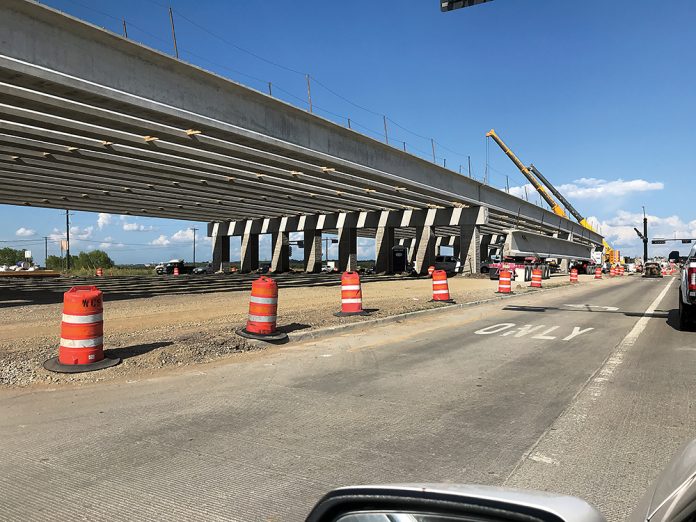The North Central Texas Council of Governments (COG) is a massive transportation apparatus that wields power across the fourth, and soon to be the third, largest metropolis in America, controlling regional transportation allocations for 7.5 million people.
As that population continues to grow toward 15 million people, it is high time to usher in true proportional representation on the board. Or, failing that, to split the COG into multiple COGs.
To give you an idea of just how powerful it is, the COG has control over a transportation network serving 16 North Texas counties and a population larger than the populations of most states. That means the COG’s transportation department effectively controls federal and state transportation dollars for more people than do 37 different state departments of transportation.
Unlike the states, the COG transportation department is governed by a board, the Regional Transportation Council (RTC), rather than by a state executive branch. Whoever controls the most seats on the board holds the most power. Collin County controls only five of the 44 seats on the RTC, despite the fact that it is one of the fastest-growing counties in the nation.
Between 2000 and 2015, our population grew by 86 percent, far outpacing the growth of the country overall. Over that same time, employment rose by 77 percent. And that was before huge employers like Toyota Motor Corporation, JPMorgan Chase & Co., FedEx Office® and Liberty Mutual® Insurance made Collin County their home. Between 2017 and 2018, Collin County added more citizens than either Dallas or Tarrant County.
By the end of 2017, the Legacy and Frisco developments alone had already added more than 23 million square feet of commercial space, just half a million square feet less than downtown Dallas. According to Cushman & Wakefield, about 720,000 square feet of office space was under construction in Plano and Frisco as 2018 began.
So, where do Collin County highway projects fit into this massive regional transportation apparatus?
Today, Collin County is unique among the COG counties. It boasts a growing population relative to Dallas and Tarrant Counties, and it is much more populous than the smaller counties. Yet, it lacks a high-priority interstate highway.
Our highest-priority highway project, U.S. 380, does not even show up in the 56 listed major freeway/tolled projects in Annex E, Mobility 2045, a plan recently approved by the RTC. It is neither on the list, nor on the “Highway Corridor Projects” or “Major Highway Recommendations” maps.
That is a 2045 plan — meaning it includes project priorities stretching beyond 25 years from now. For whatever reason, U.S. 380 has not met the right “criteria,” though the need is obvious to everyone but the RTC. The highway already has the worst rating possible: a level F. And the county’s booming population means the pressure to update U.S. 380 will only grow.
According to our county engineer, the estimated RTC allocation is $1.035 billion to Collin County over the next 10 years. If the county executes the expected bond packages on schedule, local funds will provide approximately $1.2 billion for major highways in the same time frame. That is $165 million more in local funds than in state and federal funds. Normally, local funds cover 10 to 20 percent of major construction project costs, but Collin County taxpayers will have to fund more than 50 percent of major Texas Department of Transportation® (TxDOT)-managed projects.
History suggests Collin County will have no choice but to provide a major percentage of funding for our highways into the future. The recent improvements we see on many of our highways, like U.S. 75, were paid for primarily by local funds, not the state and federal dollars controlled by the RTC. And between 2004 and 2014, local money accounted for 75 percent of all funds for TxDOT projects.
How does this compare with the burden on other nearby counties? Let’s do a simple layman’s review of just a few of the recent billion-dollar-plus RTC projects in the metroplex:
• Interstate 635 (LBJ Freeway) — Dallas County: more than one billion dollars.
• The Funnel — Dallas County, just north of DFW airport: more than one billion dollars.
• Interstate 35W — Tarrant County: more than one billion dollars.
• The Horseshoe — Dallas Mixmaster: one billion dollars.
• Interstate 635 E — Dallas County (just received approval for improvement): more than one billion dollars.
And, now, a recent headline in The Dallas Morning News, “Up Next for TxDOT: A $1.2 billion, three-highway project in Tarrant County.”
I realize Collin County only has five full votes on the 44-member RTC, but I have to ask, “When will Collin County, which is growing faster than the other counties, see a billion-dollar project to support our tremendous growth?”
Obviously, Dallas and Tarrant Counties (and every interstate highway) could easily soak up all the transportation dollars available into the distant future, but our growth has to be addressed by our regional partners. Development plans for more than 25 years of projects cannot ignore the needs that we have today.
When will Collin County have its highest priority addressed with a major freeway project? U.S. 380 rates level F today. What will it have to look like before it can be included in “The Plan?”
If the COG cannot address the explosive growth in Collin County, nor provide proportional representation on the RTC, Governor Greg Abbott should consider splitting the North Central Texas COG so its authority will be more appropriately spread across multiple councils.
Keith Self has served as the county judge for 12 years and as a member of the executive board of the Council of Governments for most of his tenure. Prior to elective office, he served in the U.S. Army for 25 years.


